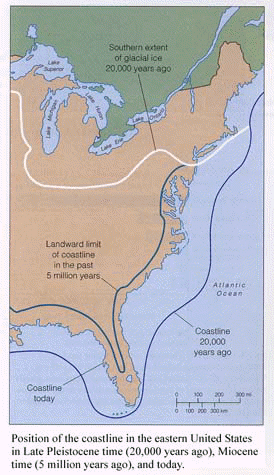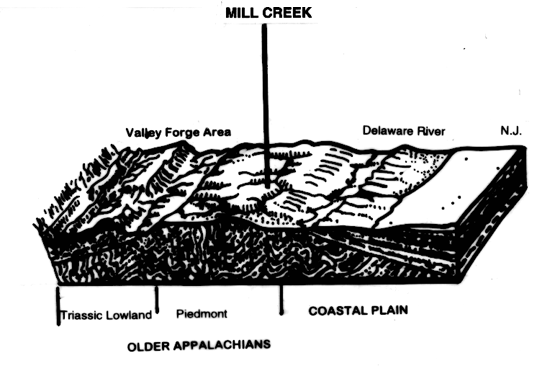| PHYSIOGRAPHY |
|
| The physiography, or
physical form of the land in the eastern United States has been shaped by millions of
years of history. During this time, climate fluctuations have caused rising and
falling temperatures. The most recent major climate shift was 20,000 years ago, in
the Late Pleistocene era. At that time, glaciars covered New England in ice,
proceeding as far south as northern New Jersey. Furthermore, the coastline was
hundreds of miles further out to sea. As the glaciars melted, the level of the oceans rose, moving the coastline further inland. Over time the exact location of the coastline has shifted. This movement of water and change in climate over long periods of time have resulted in the shape of the land today. |
* Pipkin, Geology and the Environment. p280.
|
| New Jersey and other
coastal areas were alternately submerged and dry land. The rising waters eroded
rocks from the mountains of the Piedmont. As the coastline withdrew, raging rivers washed these sediments out to sea. These particles,
or sand, were deposited as the sea shrank, and a flat, rich sandy
plain was left, known as the Coastal Plain. This geology
supports many specific habitats and plant and animal communities. Philadelphia is situated at the dynamic point where the Coastal Plain and the Piedmont, or rocky upland, meet. Both lowland habitats and upland habitats exist in close proximity at these boundaries. Philadelphia once hosted diverse and rich natural communities. Now these natural communities have been displaced by equally diverse human communities. |
|
|
REFERENCES
|

